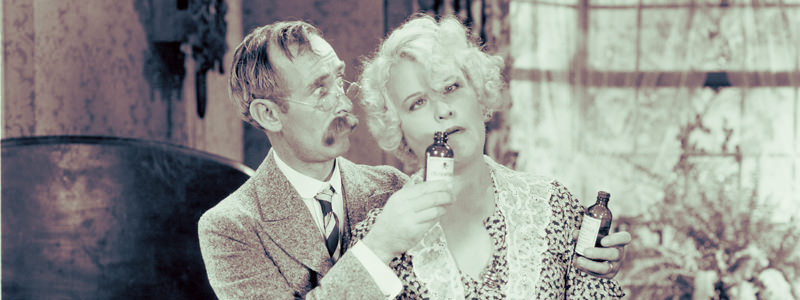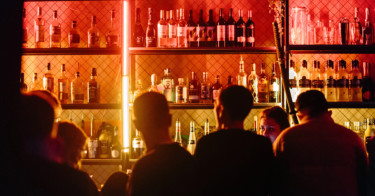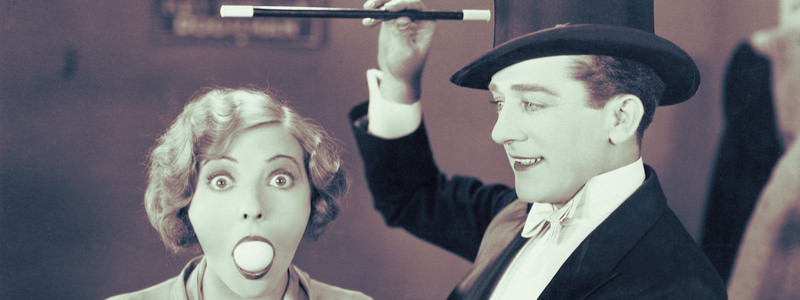When you sit down with your poison of choice, your mind will probably be blown some way or another. After all, booze brings out the philosopher in all of us. But there are some alcoholic factoids that may confuse and intrigue you before you even set the glass to your lips. Find out 15 little known facts about your favorite imbibements of choice…
1 – Bourbon doesn’t have to be made in Kentucky.
In fact, some of the best bourbon is made elsewhere. Although bourbon is definitively American (and it’s been that way since ‘64), there’s no law dubbing it terroiristic of Kentucky. In fact, though bourbon was named after Bourbon County, KY, it’s no longer being produced there.
2 – Bourbon doesn’t have to be aged for a certain amount of time.
“How can you call it bourbon, then?” Well, because age ain’t nothin’ but a number. Though straight bourbon must be aged for two plus years, bourbon just has to touch oak. The aging process is time consuming, so when new distilleries launch, they use lots of cool tactics to speed it up. Smaller barrels, for instance, will increase surface area, increasing contact between oak and juice and thus maturing the bourbon quicker.
3 – London dry gin isn’t made in London.
London dry gin = dry gin. The term refers to method rather than geography. Post distillation, London dry gins lack coloring, added sugar exceeding .1 grams per litre, or added ingredients (except for water). Most of the gin you see at your local bar is probably London dry gin.
4 – Wine doesn’t have to be made from grapes.
Sure, it may not always turn out delicious and it doesn’t always make sense agriculturally, but fruit wine is still wine. Plum, grapefruit, and lychee are popular fruit wine flavors, but you can also search the globe for more obscure selections, like East African banana wine.

5 – Vodka isn’t the world’s best-selling spirit category, baijiu is.
Ever heard of baijiu? It’s a Chinese spirit made primarily from sorghum, and it has a whopping $23 billion market. Though less well-known in the US, it’s due to make waves soon. High in alcohol, distinct in taste, and a great accompaniment to Asian food, baiju may soon be endangering the sake bomb.
6 – Rum and cachaça aren’t the same thing.
Rum is made from distilling molasses, cachaça is made from distilling sugarcane juice. Although cachaça is sometimes referred to as Brazilian rum, molasses isn’t sugarcane juice and cachaça isn’t rum. The national drink of Brazil is the Caipirinha, made strictly with cachaça.
7 – Taking your temperature used to involve brandy.
In the 1600’s, thermometers called on brandy instead of mercury. I wish it would have stayed that way. My thermometer could have doubled as a flask. Turns out, mercury measures temperature a bit more accurately. Shucks.
8 – Vodka translates from Slavic to “little water,” so you should totally wash your hair with it.
Mixing a shot of vodka with your conditioner will plunge the pH on your hair, nipping your cuticles and eliminating frizz. Vodka: it’s always great in the summertime.
9 – Sadly, a bottle of tequila never contains a worm.
Why does this sadden me? I don’t know, it feels like the truth is tainted childhood lore. Anyway, only a few mezcals have a worm at the bottom, and its actually a moth larva. Yummy. This particular larva infests low quality agave plants, so a worm in your bottle is a marketing ploy at best, a sign of gross liquor at worst.
10 – Up until pretty recently, Campari used to be made from crushed up beetles.
If you sipped Campari before 2006, you were enjoying this ruby red amaro made from beetle wings. And, unlike a ladybug infested glass of Riesling, it was intentional. The company now uses artificial food coloring, which upsets certain purists. However, Campari apparently gave in to vegetarian pressure.
11 – During Prohibition, you could get a prescription for whiskey.
I bet, like the brandymometer, some of us wish this was still a thing. Whiskey was sold in pharmacies, the exemption from the ban playing a large part in Walgreen’s expansion. By 1930, the number of Walgreen’s stores had multiplied by twenty.
12 – Crème liqueur contains no cream.
Crème refers to the syrupy consistency. Popular varieties include crème de cacao and crème de menthe. Incidentally, crème liqueurs go great with cream. Try a Grasshopper (crème de menthe) or a Brandy Alexander (crème de cacao) the next time you’re craving an alcoholic dessert.
13 – You can drink flowers.
Crème de violette is made from violets. Though sometimes made with artificial flavoring, you can find crème de violette made of actual flowers. Crème de violette is often used in an Aviation cocktail, along with gin, maraschino liqueur, and lemon juice.
14 – Whisky doesn’t darken because of the wood, it darkens because of the char (and the age).
If you age whisky in an uncharred oak barrel, it will come out yellowish. The char is what gives the whisky its beautiful amber color. For this very reason, there are barrel-aged white whiskies. You’ll still taste oak, but the smoke will be absent.
15 – George Washington had a distillery.
After its completion, it produced 11,000 gallons of hooch a year. It’s also still operable, sort of. Now that’s what I call patriotism.

